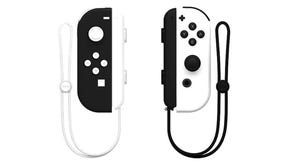Source: MS quadrupling Kinect accuracy
Finger movement and hand rotation possible.
Microsoft is working to improve the accuracy of Xbox 360 motion-sensing add-on Kinect so that it could detect finger movement and hand rotation, Eurogamer understands.
Microsoft's Kinect team is said to be working "very hard" on a switching or compression technology that will allow a greater amount of data to pass through Kinect to the Xbox 360 console.
Kinect features are dictated by firmware so that they can be added and upgraded over time.
The depth sensor used by Kinect is also dictated by firmware – it is currently set at a 30 frames per second limit and a 320x240 resolution limit.
At a 640x480 resolution, however, Kinect could begin to detect fingers and hand rotation – an effective quadrupling of its accuracy.
The issue relates to the USB controller interface, Eurogamer was told. It is capable of around 35MB/s, but it only uses around 15/16MB/s.
This artificial limit is in place because multiple USB devices can be used at once on an Xbox 360. But Microsoft is working on a technology to allow greater throughput in this regard, Eurogamer understands.
If Microsoft achieves its goal it could double the spec of Kinect's depth camera with a simple dashboard update.
Microsoft had not responded to Eurogamer's request for comment before publication, but Digital Foundry's Rich Leadbetter described the potential accuracy improvement as "eminently doable".
Microsoft would need to "disable or lower throughput of game installs running from USB flash drives to free up additional bandwidth," Leadbetter said.
"All eminently doable though bearing in mind that Kinect 'only' needs 20MB/s for full res from both cameras.
"The resolution coming out of the depth camera via PC is indeed 640x480, but it is uncertain just how accurate the camera's sensor is.
"Additionally, processing four times as many depth pixels could slow things down more."
Last month Anton Mikhailov, a software engineer at Sony Computer Entertainment America's research and development department, told Eurogamer Sony turned down Kinect's 3D camera because of the limitations of the tech.
"In reality, the 3D cameras we surveyed and what Kinect ended up using, they're 320x240 resolution, so when you're talking about tracking fingers, or even tracking things like the rotations of your hand, you're working with 10x10 pixels," Mikhailov said.
"It's very hard to get anything useful out of it."
Mikhailov doubted Kinect's capacity to create a decent Star Wars game "because there are so many ambiguities, and it's nearly impossible to track the angles of your wrists".
If Microsoft achieves its goal of improving Kinect's accuracy, however, Mikhailov could be proved wrong.








